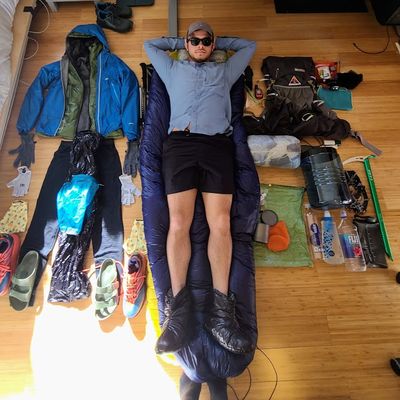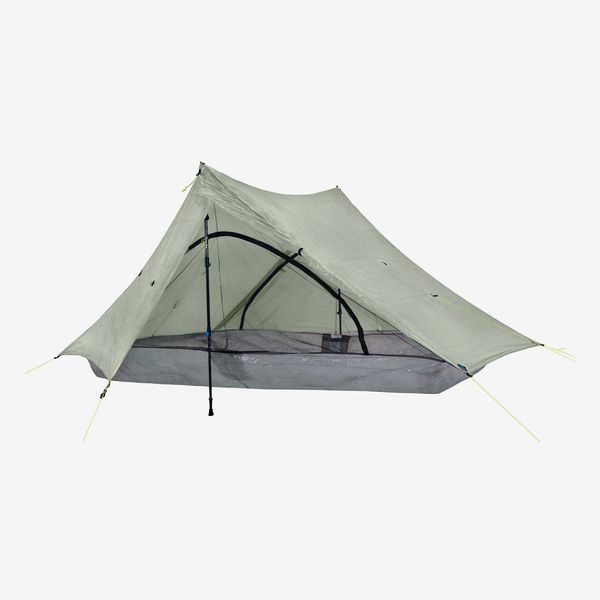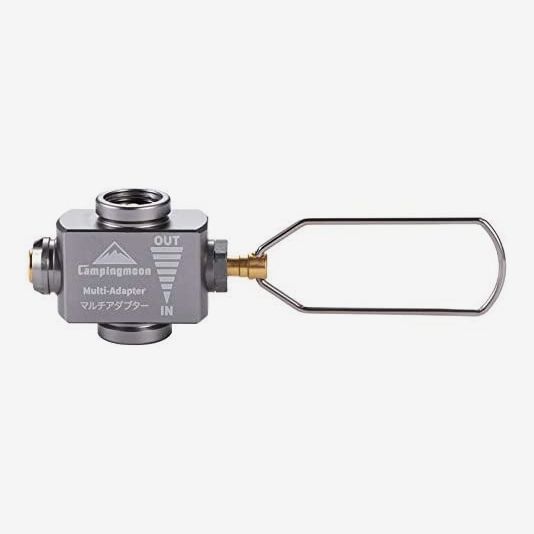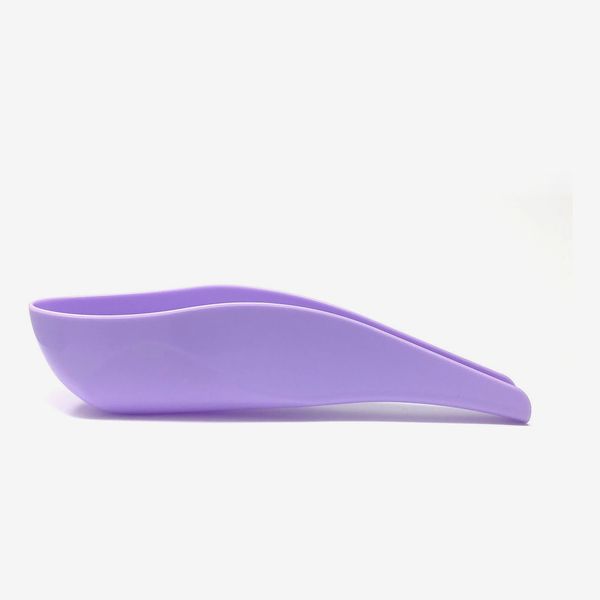
Status can be a funny thing. Of course, it is most obviously expressed through shiny hardware and easily recognizable logos, but it gets far more interesting when you start to observe the more subtle signals — the way you tuck your shirt, or what you eat for breakfast, or your particular brand of notebook can mark you as in or out. And, of course, what counts as a status item varies wildly across human tribes. In our series “Insider Goods,” we’re talking to members of different tribes (some with their real names, some anonymously) to learn about the niche status items among Broadway actors, ballerinas, or brain surgeons.
Today, we look at Pacific Crest Trail thru-hikers. Each year from mid-April to late September, roughly 8,000 hikers seek to walk the entirety of the 2,650-mile PCT, which stretches between the U.S. borders with Mexico and Canada. Trekking the PCT, which surged in popularity in the past decade partly thanks to Wild, Cheryl Strayed’s 2012 memoir (as well as the 2014 film adaptation starring Reese Witherspoon), requires specific backpacking gear, which is often super lightweight and durable. But there’s another level to the gear: not looking like a total noob. We talked to four PCT veterans to get the lowdown on what marks someone as a seasoned thru-hiker on the trail and at camp, from the gear to use, the clothes to wear, and the places to stop for free beer and pie.
A Smartwater bottle and a filter
If you spot someone on the trail with a beat-up Smartwater bottle, there’s a high chance they’re a thru-hiker. Harrison Bacordo, a Denver-based software engineer who completed the PCT last September, says more than 90 percent of PCT hikers use these gas-station water bottles because they’re lighter than others, such as Nalgenes or heavier stainless-steel drinking vessels (every ounce matters across 2,000 miles). The fact that they’re available with sport caps is another big draw. “It made drinking much easier,” Bacordo says. “You don’t have a cap to unscrew and potentially lose water every time you want to drink.” Because they’re available at gas stations or convenience stores in towns along the trail, they’re easy to replace. “I would replace them every 500 miles or so, whenever they became too bent up or dirtied.”
To pair with the Smartwater bottle, lots of thru-hikers use this one from Sawyer because it can screw on to the bottles’ tops. That combo saves on weight compared to lugging a heavier gravity-filter apparatus. The Smartwater–Sawyer filter combo has long been recommended on ultralight blogs, including ultralight Reddit.
Bacordo and Austin Minton, who hiked the PCT last year, used the popular Katadyn BeFree filter, which doesn’t screw on to the Smartwater bottle. Instead, they would filter their water in a separate bottle, and then pour it into their Smartwater bottles — Minton says he didn’t want to wait a long time to drink his water, so he opted for a filter that you could quickly drink from.
Trail-running shoes and camp slippers
The boot on the cover of Wild is decidedly not the shoe you’ll spot on the PCT. Nowadays, hikers are opting for light, breathable trail-running shoes to cover long distances in shorter amounts of time. “Long-distance hikers were the first in the outdoor community to experiment with and popularize the use of trail-running sneakers for backpacking,” says Scott Wilkinson, the content-development director at the Pacific Crest Trail Association. “Prior to that, the idea was that you can’t do any serious hiking or do serious backpacking unless you’ve got a giant clunky, stiff leather pair of waffle stomper boots on.” The Altra Lone Peak, which Wilkinson wears, is one of our favorite pairs for women’s and men’s hiking. Altra is known for its wide toe boxes that offer wiggle room for your toes to splay out.
Bacordo hiked the majority of the PCT in his Hoka Speedgoats (he started with Speedgoat 4s and then switched to Speedgoat 5s after about 300 miles). “These shoes worked wonders for me and many other hikers I met on trail,” he says. It’s also one of our favorite shoes for hiking.
At camp, Bacordo said he and other hikers used these lightweight EVA-foam Birkenstocks to rest their feet. “They were fantastic and kept my feet healthy and breathing,” he says.
Clothing with colorful prints or patterns
“Everyone wears these really fun running shorts — ones that have French fries, bananas, donuts on them — just fun stuff,” says Minton. He also spotted people wearing sun-protective hoodies with floral designs on them, many from the brand Jolly Gear. James “Jupiter” Hoher, a thru-hiker and video creator who completed the PCT in 2022, says tops from the brand Town Shirt were also popular on trail.
“In 2015 or 2016, Hawaiian shirts just became this thru-hiker wardrobe,” says Hoher. “If you get on trail, or walk around a PCT town, you just see all these weird skinny people wearing Hawaiian shirts. You spot them and you’re like: ‘That’s definitely a thru-hiker.’ It also fits in with the dirtbag ethos of trying to pinch pennies here and there, like going to a thrift store instead of maybe buying like an expensive one.”
All Dyneema everything
Walk by any camp along the PCT, and you’ll likely spot a Duplex. Nora “Shotput” Sands who completed the PCT in 2022 and the Appalachian Trail in 2020, calls the ubiquitous Duplex tent “the Toyota Camry of ultralight backpacking.” “Just so many people use them, and they’re so recognizable,” she says. That’s because it’s made of Dyneema — a tough, lightweight fabric that can stand up to lots of abrasion. Sands used one on trail and says it’s the go-to model for people who are trying to go a little bit lighter than a standard REI tent. To cut down on weight, the Duplex doesn’t come with regular tent poles. Rather, hikers use their hiking poles to prop it up. Bacordo also carried a Duplex for most of the trail, but switched it out for a Nemo Hornet — a more comfortable, double-walled tent — toward the end of his hike.
Anyone familiar with ultralight gear has heard of Hyperlite Mountain Gear, a popular brand among the ounce-counting enthusiasts for its Dyneema backpacks and gear. “Hyperlite is huge in the thru-hiker community right now,” says Minton, who used the 3400 Southwest pack for the entirety of his hike and now uses it for regular backpacking trips, too. Sands says she “saw a ton” of people wearing Hyperlite packs on trail. “They’re one of the most popular packs, for sure.”
Everyday items that serve a different purpose on trail
A lot of the most-used items on trail — like Tyvek sheets, floss, and trash compactor bags — come from hardware and grocery stores. Tyvek sheets are used in building new homes for its durable yet lightweight construction. “I would say 95 percent of hikers have one. It’s used almost universally on the trail,” says Bacordo, who uses them as a ground sheet to place underneath his tent. “Most people just use it to lay on for breaks while hiking,” he adds. 2 Foot Adventures, an outdoor-gear shop in Julian, California (the first stop along the northbound trail), sells “rolls and rolls” of Tyvek sheets for PCT hikers, Bacordo says.
Apart from keeping your teeth clean on the trail, dental floss serves an equally important purpose: gear repairs. “I’ve used it to patch holes in my shoes with a threading needle,” Bacordo says. “It’s so extraordinarily strong. It’s lasted me hundreds of miles, and it’s something that a lot of people on trail use all the time.”
For their dry bags, Bacordo says PCT thru-hikers opt for trash compactor bags. “A lot of people use them to line their packs,” Bacordo says, explaining how they function the same way a pack liner might. “A compactor bag is just much more durable than your everyday kitchen trash bag. The kitchen bag is very stretchy, whereas the compactor bag has more rigidity and durability, which is what you’re going for.”
The (free) items you collect along the way
Beer is one of the many small rewards you get while hiking the PCT. Donner Ski Ranch in Truckee, California, will give thru-hikers a free 40-ounce beer when they show their PCT permit. “It’s an essential spot to stop,” says Minton. “After the Sierra, which is one of the tougher spots along the trail, it’s cool to be rewarded with a super-cold large beer after that.”
Another prized gift is a hard-to-find PCT hang tag. Sands got a hang tag for her pack from a Pacific Crest Trail Association volunteer at the southern terminus, near the U.S.–Mexico border. According to the PCTA website, they’re in limited supply and can’t be mailed or purchased. To get one, you have to show your PCT long-distance permit in person at various locations on the trail.
It’s customary to get a free slice of pie in Julian, California. Two pie shops (Julian Pie Co. and Moms Pie House) offer free slices of pie to hikers who show their hiking permit. “It’s a legendary stop,” says Minton.
Gear that makes you the envy of other hikers
Then there’s unexpected but useful, coveted gear. Thanks to a tiny, 30-gram gas adapter, Minton “never paid for fuel” on his PCT push last year. It allows you to siphon gas from near-empty fuel canisters, which he would come across at various hiker boxes (a free gear library of sorts) in towns along the trail. Many of those cans would have otherwise been thrown away. All that gas allowed him to cook big meals with his friends. “People at camp would always smell our cooking and be like, ‘Are you guys making pancakes?’ And we were like, ‘Yeah, dude, of course we are!’’’
“It’s such a power move to be the girl that can stand while she pees, you know?” says Sands, who calls her PStyle “the absolute biggest game changer for me” on the PCT. She didn’t have to take her backpack off or worry about finding a private space — and now uses it off the trail. “I’m planning on taking it to the Taylor Swift concert in Seattle so I can use the men’s room instead of the women’s room, because the line’s gonna be way shorter.”
Sands also had these teeny ultralight lights, recommended by a friend, who would hang them in their tent at night. “It was such a vibe, it’s like hanging out in a little fairy den. So I got them too. People would always know it was my tent when they were walking by.”
The Strategist is designed to surface the most useful, expert recommendations for things to buy across the vast e-commerce landscape. Some of our latest conquests include the best acne treatments, rolling luggage, pillows for side sleepers, natural anxiety remedies, and bath towels. We update links when possible, but note that deals can expire and all prices are subject to change.



























